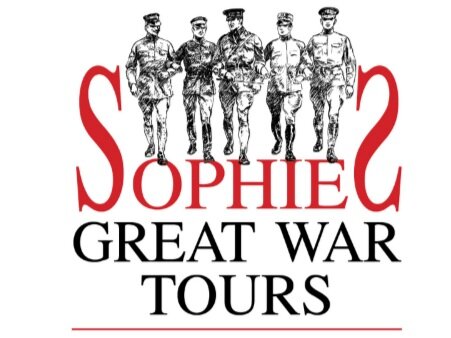If you are reading this, you have probably visited many cemeteries and walked past literally thousands of headstones, each one representing a person with a story to tell and a life cut short.
Each of us will be drawn to a headstone for a different reason.
In this post, I want to discuss the headstones I have seen on my travels that have stayed with me, and what it is that makes them special.
Devonshire Trench
My first trip to the Somme (that I remember; I note that I made my actual first trip was when I was only 5 months old!) was in 2005. Everywhere I went was truly special but my first lump-in-throat moment came at the Devonshire Trench cemetery.
The story of the men of the 8th and 9th Devonshire Regiment who were in position here on 1st July 1916 is one that once heard is never forgotten.
Captain Martin of the 9th was aware that a German machine gun nest was located on the outskirts of Mametz village, the location of their objective for that morning. This machine gun position would be a major obstacle to his men’s success on the day, so he duly requested that additional artillery fire be targeted in order to silence the gun. Captain Martin, a pre-war artist, made a plasticine model highlighting the exact location of the machine gun position.
Just before zero hour at 07:30, the lads of the Devonshire Regiment left their trenches under the cover of a mortar smoke screen. As they crossed the ground in front of them, the machine gun about which Martin was so concerned opened fire.
The Devonshire Trench Cemetery is the final resting place of 163 men, including Captain Duncan Martin.
Just before you walk through the gates to the cemetery, you pass a stone with an incredibly moving inscription:
“The Devonshires Held this Trench, The Devonshires Hold it still”.
Raymond Asquith
Social class or status did not make one immune from the hardships of war or the consequences of it. The then Prime Minister, Herbert Asquith, lost his eldest son on the Somme. So too did the then Labour Leader, Arthur Henderson.
Raymond Asquith of the Grenadier Guards led his men, under intense shellfire, on their way to capture a position near Ginchy.
He was shot in the chest and despite knowing instantly that he could not survive the severity of his wound, it is said that he did not want his men to be affected. As he was picked up by a stretcher bearer, he lit up a cigarette and smiled over to his men.
He is buried in the Guillemont Road Station Cemetery on the Somme. The inscription on his headstone reads,
“Small time, but in that small time most greatly lived this star of England”.
The reason this spoke to me was that although the sentiment was deeply personal from the Asquiths to their son, the words I’m sure were echoed by families throughout the land.
The inscription also perfectly captures the sentiment that a generation of bright young men lost their lives.
Raymond, from Hampstead, was 37 years old and married with two daughters and a baby son.
Raymond Asquith grave
Ronald Butcher
Some inscriptions are expressions of pure grief. They are not a message written from the perspective of the loved talking to the soldier that has been killed. They are instead an outpouring. You can only imagine that in this case, James and Ellen Butcher of Kidderminster, Worcestershire could summon only this thought:
“The sorrow we felt we cannot explain, the ache in our hearts will always remain”
It is a beautifully crafted sentiment, but it makes me think that they are all-consumed by this grief and cannot see a way through it.
We often overlook the experience of loved ones waiting at home for news. This epitaph brings it back vividly.
Ronald is buried in Wormhoudt Communual Cemetery, France.
John George Dunlea
Overtly political or inflammatory messages were not allowed to be inscribed on headstones. John’s subtle inscription is, however, very powerful and makes you think about all the reasons why men joined up to fight.
It also reminds us also of the political turmoil that was happening across the UK – a fact that spurred many on to volunteer, but with the hope of two very different outcomes.
“An Irish Volunteer, He died for the freedom of small nations”
John is buried at Auchonvillers Military Cemetery.
All
All headstones tell you a story. You can learn something about the man or about the war itself. Next time you find yourself in a local parish church, see if you can find one of those beautiful white stones, or stop in a Commonwealth War Graves site and read the epitaphs. They will speak to you.




